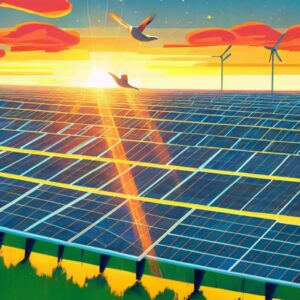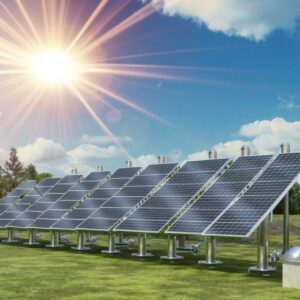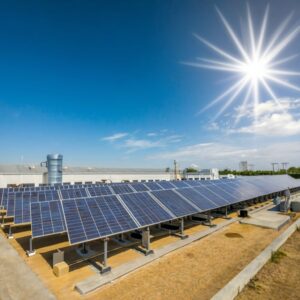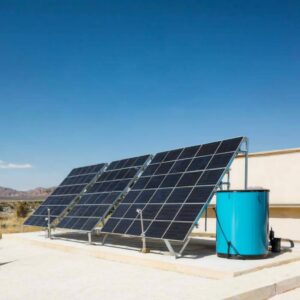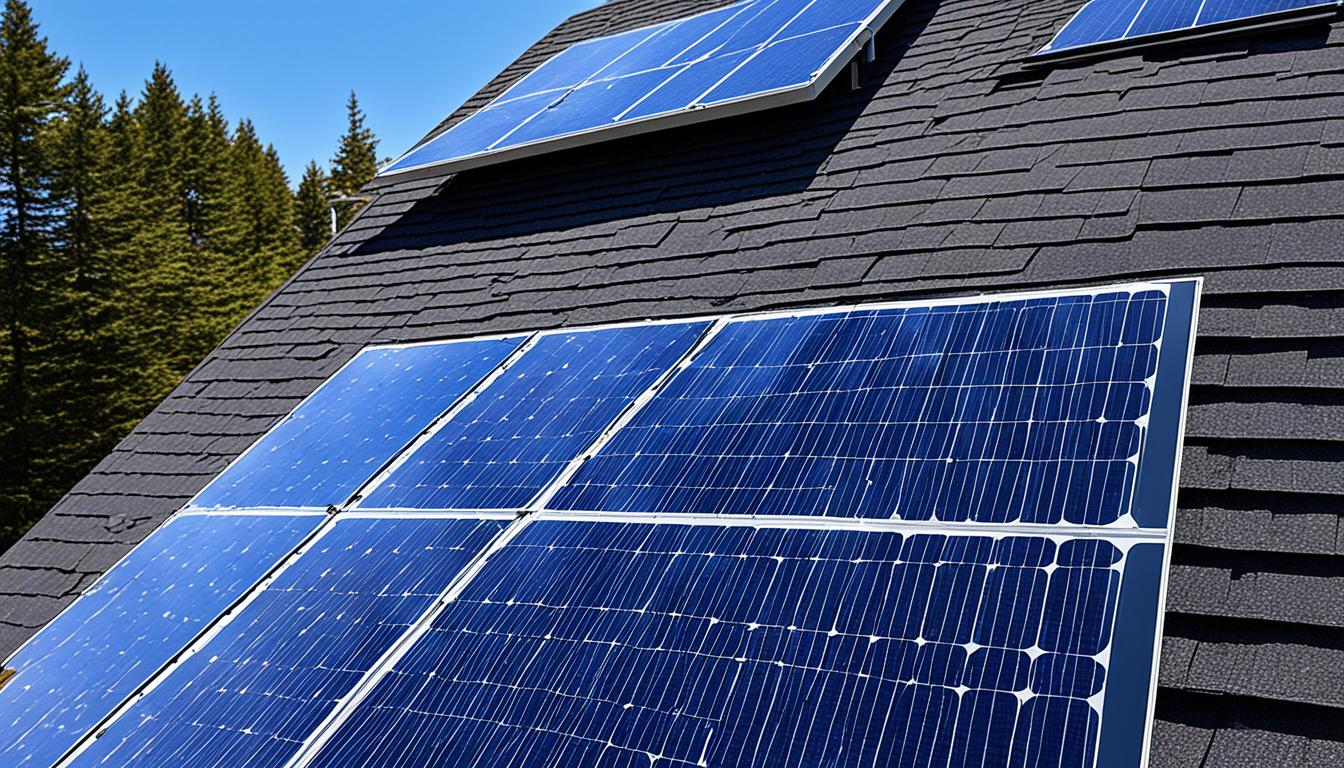
Solar energy has gained immense popularity as a sustainable and environmentally friendly alternative to traditional sources of electricity. However, like any emerging technology, it is often accompanied by misconceptions and myths. In this article, I aim to debunk common myths about solar energy by providing factual information and shedding light on the truth.
Key Takeaways:
- Solar energy has become more affordable and accessible, thanks to technological advancements and government incentives.
- Solar panels can generate electricity even on cloudy days or in cold regions.
- Advancements in energy storage technologies have addressed the intermittency issue of solar energy.
- Solar panels require minimal maintenance and are designed to be durable.
- Solar energy is not limited to residential use and can be harnessed in various sectors.
Myth #1: Solar Energy is Expensive and Inaccessible
Many people believe that solar energy is costly and limited in accessibility. However, technological advancements and increased demand have significantly reduced the cost of solar panels. Government incentives and financing options make solar energy more affordable and accessible to homeowners and businesses.
Solar energy has come a long way from its early days when it was considered a luxury reserved for the wealthy. With advancements in manufacturing processes and economies of scale, solar panel prices have plummeted, making them more affordable for the average consumer.
“The cost of solar panels has dropped significantly in recent years, making solar energy a viable option for homeowners looking to save money on their electricity bills,” says Jessica Smith, a renewable energy expert at GreenTech Solutions.
Moreover, government incentives such as tax credits and rebates further reduce the cost of installing solar panels. These incentives vary by state and can significantly offset the initial investment. Additionally, many utility companies offer net metering programs, allowing solar panel owners to earn credits for excess electricity they generate and feed back into the grid.
For those unable to afford the upfront costs of solar panel installation, various financing options, such as solar leases and power purchase agreements (PPAs), are available. These arrangements allow homeowners and businesses to switch to solar energy without the need for a large upfront investment.
Not only has the cost of solar energy decreased, but accessibility to solar power has also improved. Installers and manufacturers have expanded their reach, making solar energy available in even the most remote areas. This has opened up opportunities for off-grid communities and rural households to benefit from clean and renewable energy sources.
Benefits of Affordable and Accessible Solar Energy
The affordability and accessibility of solar energy bring numerous benefits to individuals, communities, and the environment. Here are a few key advantages:
- Cost savings: By harnessing the power of the sun, homeowners and businesses can significantly reduce their energy bills over the long term. Solar energy offers a sustainable and cost-effective alternative to traditional fossil fuels.
- Environmental sustainability: Solar energy is clean and renewable, producing no greenhouse gas emissions or harmful pollutants. By transitioning to solar power, we can reduce our dependence on non-renewable energy sources and contribute to a healthier planet.
- Energy independence: Solar energy allows individuals and communities to become self-sufficient in their energy needs. By generating their own electricity, they are less susceptible to rising energy prices and power outages.
- Job creation: The growing demand for solar energy has created numerous job opportunities in manufacturing, installation, and maintenance. The solar industry is a significant contributor to the economy, supporting local businesses and communities.
In conclusion, solar energy is no longer an expensive and inaccessible option. Technological advancements, government incentives, and financing options have made solar panels more affordable and accessible to homeowners and businesses. Embracing solar energy offers financial savings, environmental benefits, and the opportunity for energy independence.
Myth #2: Solar Panels Don’t Work in Cloudy or Cold Regions
One of the most common myths about solar panels is that they are ineffective in cloudy or cold regions. However, this is far from the truth. Solar panels can still generate electricity even when the weather is overcast or temperatures drop.
Solar panels operate by harnessing sunlight and converting it into usable energy. While direct sunlight is ideal for maximum efficiency, solar panels are designed to capture both direct and indirect sunlight. This means that even on cloudy days, solar panels can still generate electricity by converting diffuse light or indirect sunlight into usable energy.
In cold regions, solar panels can also generate electricity effectively. In fact, solar panels can function more efficiently in cold temperatures compared to hot climates. Solar panels rely on the photovoltaic (PV) effect, which is the process of converting sunlight into electricity. This process involves the interaction of photons with the solar cells. Cold temperatures can enhance this interaction, resulting in a more efficient conversion of sunlight into electricity.
It’s important to note that the overall energy production of solar panels may be slightly lower in cloudy or cold regions compared to sunny and warm areas. However, this should not discourage individuals or businesses in such regions from considering solar energy as a viable option. Solar panels can still provide a significant amount of electricity, especially when combined with efficient energy storage systems.
Embracing solar energy in cloudy or cold regions not only helps reduce reliance on traditional energy sources but also contributes to a cleaner and more sustainable future.
Benefits of Solar Panels in Cloudy or Cold Regions
Contrary to popular belief, solar panels in cloudy or cold regions offer several benefits:
- Energy generation: Although the energy output may be lower, solar panels can still generate a significant amount of electricity in cloudy or cold regions, offsetting the reliance on conventional power sources.
- Sustainable solution: Using solar energy reduces greenhouse gas emissions and lowers carbon footprint, making it an environmentally friendly choice in any region.
- Energy independence: By harnessing solar power, individuals and businesses in cloudy or cold regions can become less dependent on the grid, leading to greater energy independence and potential cost savings.
- Long-term savings: While solar panels may require an initial investment, they can provide long-term savings on electricity bills and potentially earn money through net metering or feed-in tariffs.
By dispelling the myth that solar panels don’t work in cloudy or cold regions, more people can realize the untapped potential of solar energy and make informed decisions about adopting this clean and renewable energy source.
Remember, solar energy is not limited by climate but rather harnesses the available sunlight to produce electricity even in less ideal conditions.
Myth #3: Solar Energy is Inconsistent and Unreliable
Many people have reservations about solar energy due to its perceived inconsistency and unreliability. The notion that solar energy production depends on sunlight availability has raised concerns about its practicality as a reliable energy source. However, advancements in energy storage technologies have effectively addressed this challenge, rendering solar energy a dependable and consistent option.
Solar panels generate electricity by converting sunlight into usable energy. It is true that solar energy production is affected by fluctuations in sunlight intensity and duration, such as cloudy or low-light periods. However, the development of reliable battery storage systems and grid-tie systems has revolutionized the way solar energy is harnessed, helping to mitigate the intermittency issue.
Energy storage solutions, such as batteries, allow excess solar energy to be stored during periods of high sunlight availability. This stored energy can be utilized during low sunlight periods, ensuring a consistent power supply. Additionally, grid-tie systems enable the transfer of excess solar energy to the electrical grid, compensating for any shortage of solar power and providing a reliable backup.
“Solar energy is now more versatile and reliable than ever before.”
The integration of energy storage technologies with solar power systems has transformed solar energy into a consistent and dependable source of electricity. This has paved the way for widespread adoption of solar energy in both residential and commercial settings. Battery storage systems and grid-tie systems have effectively resolved concerns about the inconsistency and unreliability of solar energy, making it a viable choice for sustainable power generation.
To further illustrate the advancements in energy storage technologies, consider the table below that compares the energy storage capabilities of traditional lead-acid batteries and state-of-the-art lithium-ion batteries:
| Battery Type | Energy Storage Capacity | Efficiency | Lifespan |
|---|---|---|---|
| Lead-acid Battery | Lower capacity | Lower efficiency | Shorter lifespan |
| Lithium-ion Battery | Higher capacity | Higher efficiency | Longer lifespan |
As shown in the table, lithium-ion batteries offer greater energy storage capacity, higher efficiency, and longer lifespan compared to traditional lead-acid batteries. These advancements contribute to the reliability and consistency of solar energy systems, making them a feasible long-term investment.
It is essential to dispel the misconception that solar energy is inconsistent and unreliable. Thanks to technological innovations in energy storage, solar power is now a reliable, sustainable, and cost-effective option for meeting our energy needs.
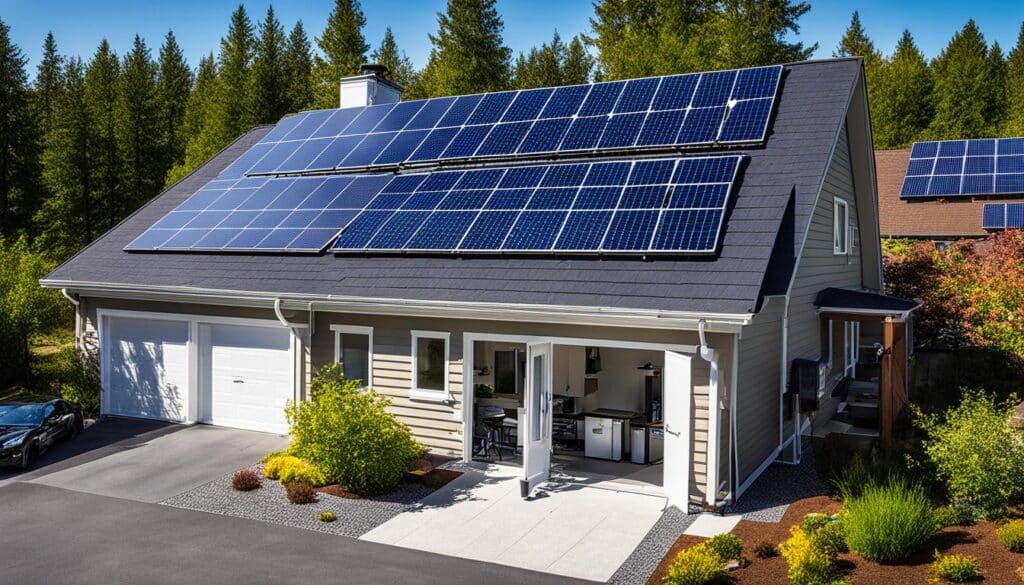
Myth #4: Solar Panels Require High Maintenance
One common myth about solar panels is that they require frequent and costly maintenance. However, this is far from the truth. In reality, solar panels are designed to be durable and low maintenance, making them a hassle-free solution for generating clean energy.
Unlike traditional energy sources that rely on complex mechanical systems, solar panels have no moving parts. This significantly reduces the risk of wear and tear, resulting in fewer maintenance requirements and expenses.
So, what does solar panel maintenance actually entail? In most cases, routine cleaning to remove dust, dirt, or debris is sufficient to keep solar panels operating efficiently. A simple wash with water and a soft cloth or brush is usually all it takes to maintain their performance.
In areas with heavy pollution or dusty environments, more frequent cleaning may be necessary to ensure optimal energy production. However, even in such cases, maintenance requirements remain minimal compared to other energy systems.
It’s important to note that regular maintenance not only helps in maximizing the energy output but also prolongs the lifespan of solar panels. By keeping them clean and free from obstructions, you can ensure they continue to generate electricity for years to come.
It’s worth mentioning that most reputable solar panel manufacturers provide warranties that cover any potential defects or issues, further reducing maintenance concerns for homeowners and businesses.
Benefits of Low Maintenance Solar Panels
The low maintenance nature of solar panels offers several benefits to users, including:
- Cost Savings: With minimal maintenance requirements, solar panel owners save money on costly repairs or service calls.
- Time Savings: Low maintenance means less time spent on panel upkeep, allowing homeowners and businesses to focus on other priorities.
- Reliability: By regularly cleaning and maintaining solar panels, users can ensure their consistent and reliable energy production.
- Durability: Solar panels are designed to withstand various weather conditions, making them a resilient option for long-term energy generation.
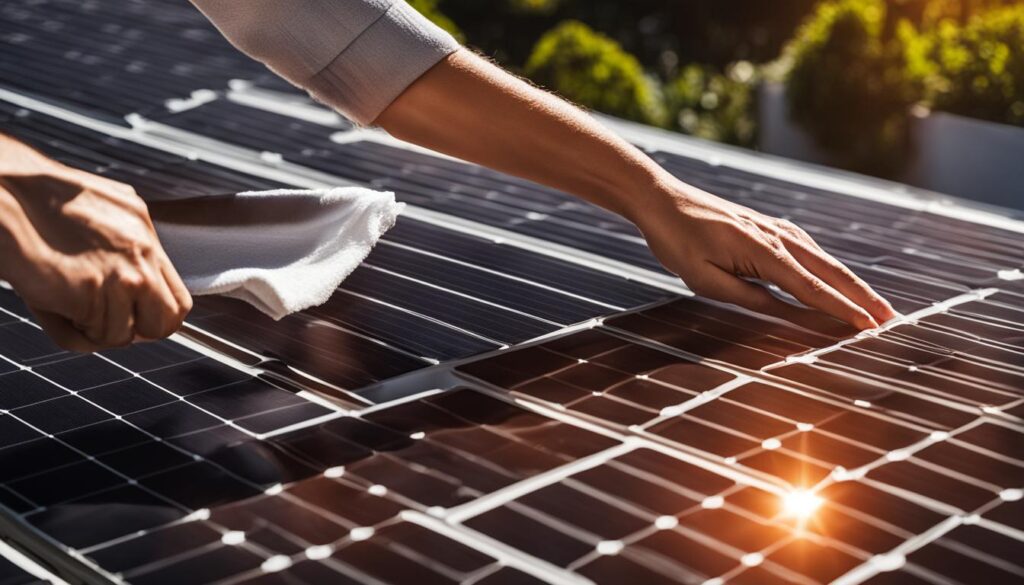
Myth #5: Solar Energy is Only for Residential Use
Contrary to popular belief, solar energy is not limited to residential applications. It is a versatile and sustainable solution that can be harnessed for a wide range of purposes in commercial, industrial, and public sectors.
Many businesses and organizations are embracing solar energy as a cost-effective and environmentally friendly alternative to traditional power sources. Commercial buildings, such as offices, factories, and shopping malls, are increasingly integrating solar panels into their rooftops to generate clean energy and reduce their reliance on the grid.
In addition, public spaces can benefit from solar energy. Solar street lights provide illumination while minimizing operational costs and reducing carbon emissions. Solar bus shelters not only offer shelter, but they also utilize sunlight to power lighting and charging ports for commuters.
The Future of Solar Energy: Innovations on the Horizon
As the solar energy sector continues to evolve, several exciting innovations are set to enhance its efficiency, accessibility, and integration into everyday life. One promising development is the rise of solar skins—a technology that allows for more aesthetically pleasing installations. Unlike traditional solar panels, solar skins can be customized to blend seamlessly with the roof, preserving the home’s visual appeal while providing renewable energy.
Another significant advancement is the integration of smart technology into solar energy systems. Smart inverters can optimize energy production by adjusting the system’s output based on real-time data, such as weather conditions and energy demand. This optimization not only maximizes energy efficiency but also minimizes energy wastage.
Moreover, building-integrated photovoltaics (BIPV) are becoming increasingly popular. These systems replace conventional building materials—like roofs and windows—with solar energy-generating components, allowing buildings to generate electricity without the need for bulky external panels. This innovation can contribute to urban environments, where space is limited, by turning everyday structures into energy producers.
As researchers and developers work on enhancing energy storage technologies, we can expect more efficient battery solutions that further address the intermittency of solar power. These advancements will make solar energy not just a feasible option for today but a cornerstone of our sustainable energy future.
FAQ
Is solar energy expensive and inaccessible?
No, technological advancements and increased demand have significantly reduced the cost of solar panels. Government incentives and financing options make solar energy more affordable and accessible to homeowners and businesses.
Do solar panels work in cloudy or cold regions?
Yes, solar panels can still produce electricity even on cloudy or cold days. They can convert both direct and indirect sunlight into usable energy.
Is solar energy inconsistent and unreliable?
While solar energy production depends on sunlight availability, advancements in energy storage technologies have addressed this challenge. Batteries and grid-tie systems allow for the storage and use of excess solar energy during low sunlight periods.
Are solar panels high maintenance?
No, solar panels are designed to be durable and low maintenance. They have no moving parts, reducing the risk of wear and tear. Routine cleaning to remove dust or debris is typically sufficient to keep solar panels operating efficiently.
Is solar energy only for residential use?
No, solar energy is versatile and can be harnessed for commercial, industrial, and public use. Innovative solar-powered solutions, such as solar street lights and solar bus shelters, demonstrate the potential of solar energy in various sectors.

